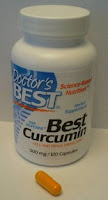In some people with certain diseases, including as cancer, those endorphins may be suppressed. According to theory, LDN taken at bedtime restores them during sleep and thereby restores the body's immune system to its normal function. Proponents of LDN actually claim that it can at least halt the progression of a large number of diseases, including myeloma, multiple sclerosis, and HIV/AIDS. For some people, those diseases may be cured. According to those same proponents, there are no significant negative side effects. The cost is modest, less than $50 per month.
Three doctors seem to be the primary proponents of LDN: Dr Bernard Bihari, Dr David Gluck, and Dr Ian S. Zagon. Their names appear at the bottom of their web site, ldninfo.org. If they are correct, LDN has halted a lot of disease, cured some, and saved a lot of lives.
Naltrexone is now in the public domain, because the patents are expired. Therefore, drug companies have no interest in funding the multi-million dollar clinical trials that might prove the efficacy of LDN one way or another, and apparently the US government hasn't been sufficiently tempted either. So it's up to us again; we can try it and see if it works.
Which is pretty much what we do with the expensive, trial-tested drugs that we otherwise take, like Revlimid and Velcade. We take them and see if they work. I wish my friend well, and will let you know whatever he tells me about his results with LDN.

Organic apple, organic plum, organic nectarine, all regular size. Organic strawberry, whopper size.







